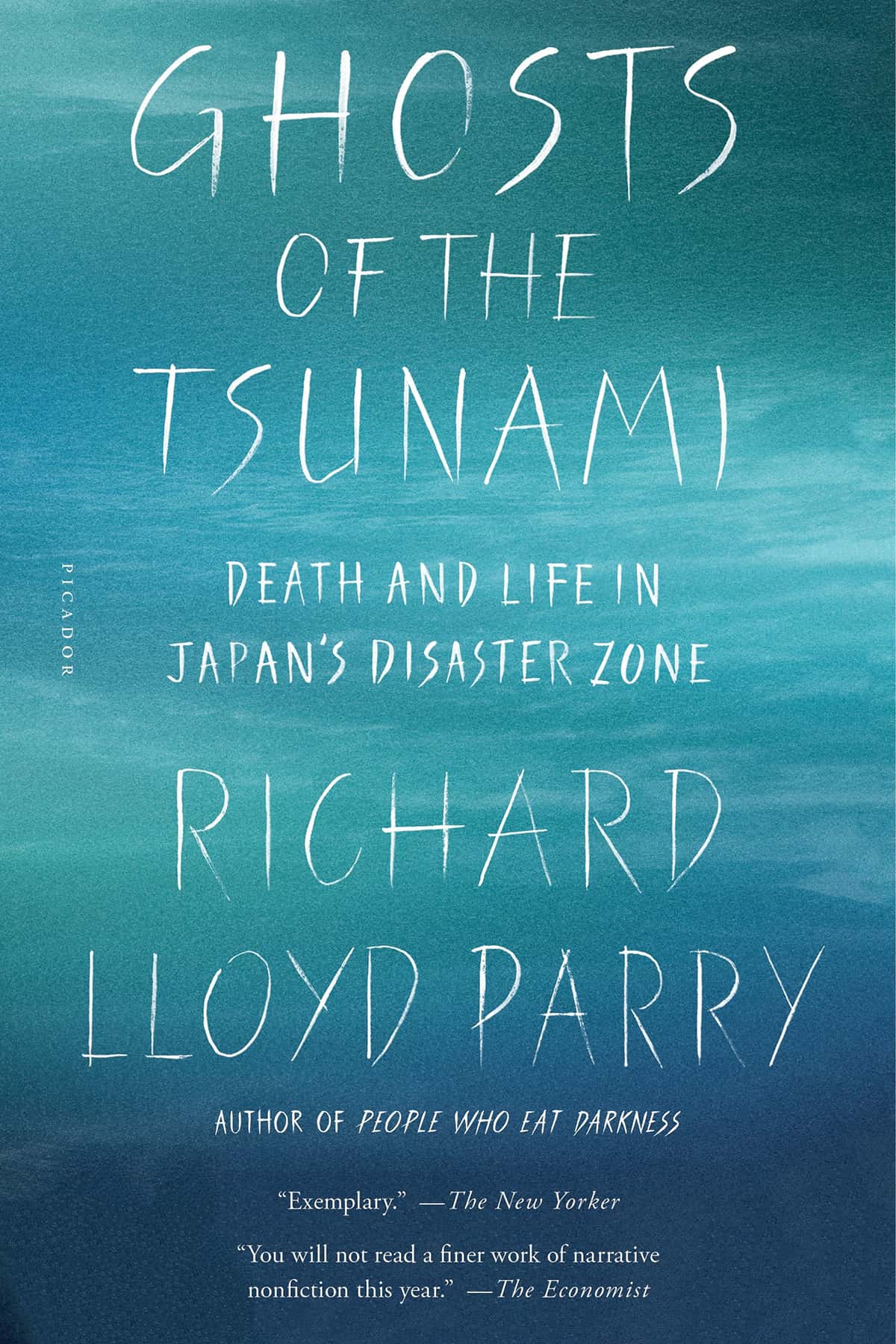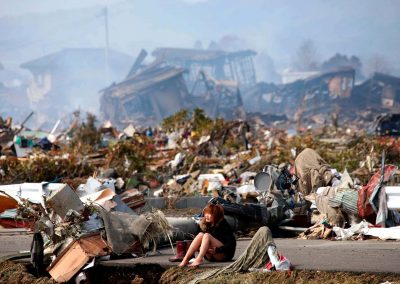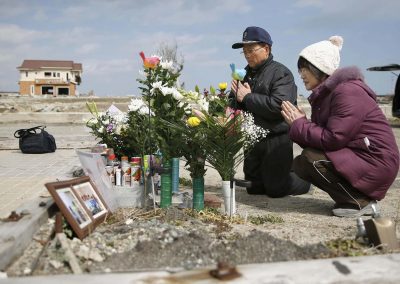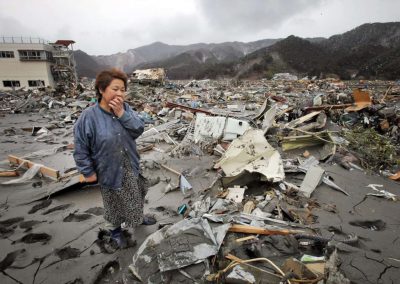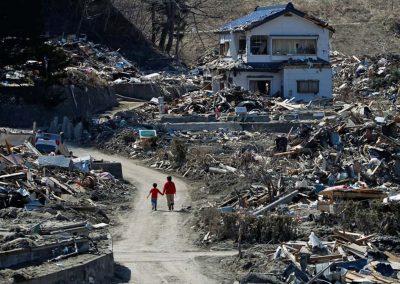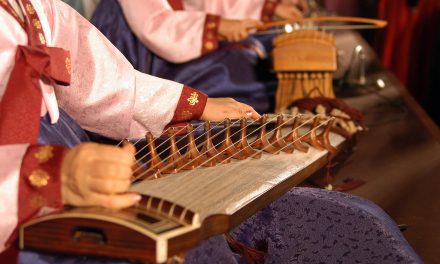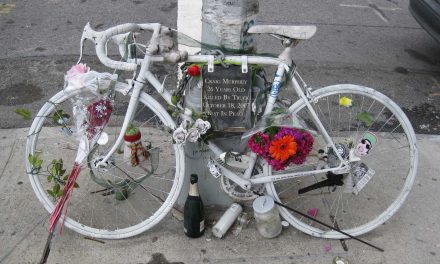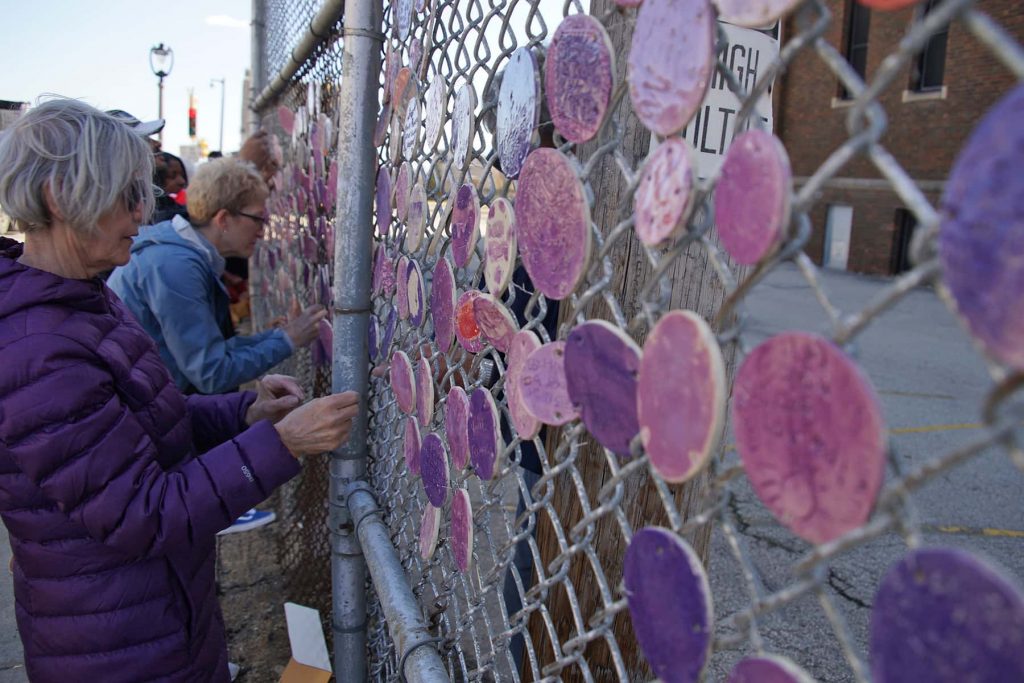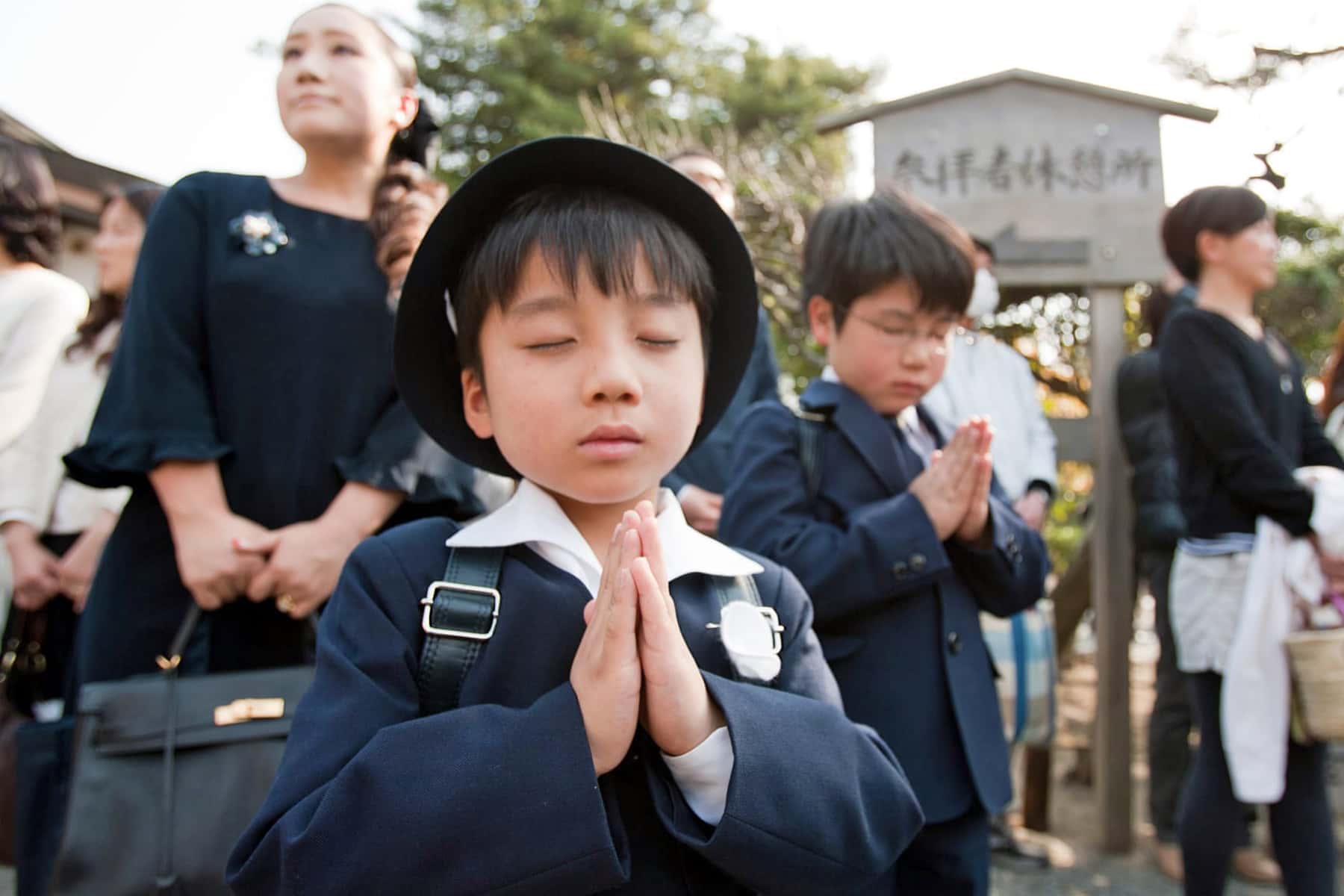
Editor’s Note: As a native of Milwaukee living in Japan, I lost everything on March 11, 2011. The disaster is why, as a refugee with an American passport, I eventually returned home. I have not spoken publicly about the experience in Japan after all these year. Originally, it was simply the lack of sensitivity and disinterest from people who I encountered, and eventually because I needed to move on with my life and put that chapter of aside. At some point, perhaps I will write about that journey, but until then there are others who continue to bless us with their talents by explaining what happened on that tragic day, its aftermath, and what it still means – even here in Milwaukee.
It has been eight years since a magnitude-8.9 earthquake in northeastern Japan triggered a massive tsunami that led to a meltdown at the Fukushima Daiichi Nuclear Power Plant. Eight years since radioactive materials from the plant poured into the air and the ocean and began making its way toward the West Coast of the United States.
Because of its harsh climate and remoteness from the centre, Tohoku, Japan’s north-eastern region, has long been regarded as the country’s backwater. Along with that reputation comes a set of unflattering stereotypes about its people – that they are taciturn, stubborn, somewhat enigmatic. Rather than speaking their minds, they grit their teeth, bottle up their feelings and go about their business in gloomy silence.
But those very traits were seen as an admirable asset in the immediate aftermath of the 11 March 2011 disaster that hit Tohoku’s coastal communities, when a magnitude-9 earthquake was followed by a tsunami, then a nuclear meltdown at the Fukushima Daiichi reactors.
Journalists reporting from the disaster zone commended the resilience of Tohoku people, marvelling at the restraint demonstrated by survivors, many of whom had lost everything. Uncomplaining, they organised themselves at makeshift evacuation centres, queued to receive rationed food and took care of the weak and wounded. Observers were made to feel that Tohoku was coping.
Richard Lloyd Parry’s book “Ghosts of the Tsunami” explains, however, that such preconceived ideas about regions and their peoples are no more than half-truths. Other realities existed beneath the surface of post-disaster life. Lloyd Parry, a Tokyo-based Times journalist, travelled many times to Tohoku in order to understand what was happening there.
The result is a compassionate and piercing look at the communities ravaged by the tsunami, which claimed more than 99% of the day’s casualties of 18,500 – the greatest single loss of life in Japan since the atomic bombing of Nagasaki.
Lloyd Parry tries to get inside those heads, and finds not so much “something wrong” as many layers of profound grief. He sees that “everyone’s grief is different, and that it differs in small and subtle ways according to the circumstances of loss”. It is also coloured by such factors as how quickly the bodies of family members were recovered and buried. In the case of bodies never found, many survivors sought the help of mediums in the hope of locating their loved ones’ remains.
Post-disaster Tohoku came to be overpopulated with ghosts, with multiple reports of sightings. This, some believe, was inevitable as the tsunami took the lives of so many people unprepared to relinquish their worldly attachments. Ghost stories were common: a dead woman would visit old friends in their temporary housing and sit down for a cup of tea, leaving dampness on the cushion she was imagined to have been sitting on. A taxi driver would pick up a man asking to be taken to an address that no longer existed, only to find, halfway through the journey, that the passenger in the rear seat was invisible.
Whether one believes in the supernatural is beside the point. The point, according to one Buddhist priest who exorcised many tsunami-induced ghosts, is that people really believed they were seeing them. Tohoku’s “ghost problem” became so pervasive that university academics started cataloguing the stories, while priests – Christian, Shinto and Buddhist alike – “found themselves called on repeatedly to quell unhappy spirits” that could, in extreme cases, possess the living.
There is another set of spirits that inhabit the pages of Lloyd Parry’s book – the ghosts of Japan’s political failures at every level of society, from village communities to local authorities to city and prefectural governments, all the way to the central government that proved unable to respond fully to the disaster. Nothing symbolized such failures better than the case of Okawa primary school, whose story is one of the engines powering this book, giving it the character of a finely conceived crime fiction or a psychological drama.
On the day of the disaster, nine schools were overwhelmed by the tsunami, and of 75 children who died while at school, 74 were from Okawa primary. Their parents wanted to know what accounted for these disturbingly disproportionate odds: after all, there was enough time between the issuing of warnings and the arrival of the tsunami for children at other schools to have been evacuated to higher spots.
Official accounts kept changing, and there seemed to be a reluctance to launch a thorough investigation. Grief-stricken and angry, some parents of the dead Okawa children decided to fight back. They filed a lawsuit against the city and prefectural governments.
But those parents were up against a peculiar kind of historical ghost – the spirit of a powerful, state-centered ideology that had proved so useful in Japan’s catch-up modernization of the 19th century. This ideology regards the people as servants of the state; those who quibble with the official line are seen at best as nuisances and at worst as selfish troublemakers who should be ostracized. It even survived the destruction of Japan in the second world war, despite the officialdom that thrived on that ideology having led the country into disaster.
In such a statist universe, Lloyd Parry contends, even bad politics is considered a kind of a “natural disaster”, an “impersonal misfortune beyond the influence of common men”, meant to be “helplessly accepted, and endured”. The apparent danger is that people stop exercising the power of individual judgment, which can lead to deadly conformism, as was the case with the elderly family who parked their car on a hill after the tsunami warnings, and then dutifully walked down the hill to report at the evacuation centre, only to meet their death. The same traits – respect for order, a high tolerance threshold and aversion to making a fuss – that made the Tohoku people model evacuees, one might argue, hinder the making of active democratic citizens.
Yet hardship can also ignite the desire to fight for one’s rights. It is little remembered today, but Tohoku has a history of struggling for its democratic dues. In the 1870s and 1880s, when Japan’s fledgling civic society was considering what kind of a constitution it would need, Tohoku thinkers who had experienced the region’s endemic poverty, inertia and bloody defeat in the 1860s civil war, led a grassroots debate, the subjects of which ranged from whether a female emperor should be installed, to press freedom and how a “backwater” like Tohoku could be integrated into the rest of Japanese society. Many of the problems debated then are still relevant today.
Of all such Tohoku-inspired democratic movements, the Itsukaichi constitution is worth noting now. This was a proposal in 1881 for a constitution drafted by the Tohoku native Takusaburo Chiba. More than half its articles are devoted to people’s rights. Chiba died at the age of 31 and his constitution had to wait nearly 90 years before being discovered in a neglected archive. It is to reformers such as Chiba that Tohoku and the whole of Japan today should be looking for inspiration.
Q&A Richard Lloyd Parry
How did you come to Okawa Primary School? How did you determine that documenting this community’s tragedy might come to stand for the whole? You describe, “finding the way in” to the story. What was your way in?
The story of Okawa School was widely known. But I was interested in telling the human story. In Ghosts of the Tsunami I try to recount exactly what happened, and how it felt for people caught up in it. The central story was about the death of young children. A terrible thing. The worst thing one can imagine, especially if you’re a parent yourself. I was often told, “I couldn’t open a book like that – it’s just so sad.” So there was the need to make the story something more than a tale of utter inconsolable loss. The narrative had to go forward. I was not telling a story of redemption or consolation. But perhaps about a sense of regeneration. I’m especially indebted to a Japanese journalist, Ikegami-san, who did the spadework, it was good work. He collected and analyzed the documents, established facts. He also worked closely with the families.
Perhaps one could say your story describes a new birth. After an exorcism, “the sense of power discharging at the end of pain as the newborn child finally enters the world.” A teacher in the audience said that her class expressed a special fascination and enthusiasm for your stories of the ghosts. And with the exorcisms.
In fact the central story was first published as an essay in the London Review of Books. I used it as a starting point, “digesting” it out into the book overall. You’ve said “I don’t believe in ghosts” but the stories are so vivid. Like the one of the old obaachan (grannie) who visits her neighbors for a cup of tea and “no-one had the heart to tell her she was dead.” What was going on there? My cold rational answer – there is no such thing as ghosts. Like the taxi driver story – an urban myth. I’ve heard it all over. They are stories rather than reportable incidents. I don’t believe in the supernatural. I think these stories stem from overwhelming psychic trauma. In the two reported cases of possession neither person was directly affected by tsunami. Neither lost family or friends. Or property. Not directly affected. But this trauma reached in to these people – into their psyches. Japan was in a funny state at that time. People were edgy. You know the feeling when you think your phone is vibrating in your pocket – but it’s not? People suddenly started getting married. Needing a sense of security. That was the meaning of the ghost stories. The stories were not evidence of survival after death…but symptoms of overwhelming damage. These stories also tended to occur when people finally had time to think about things other than survival. At first they were always busy thinking about practical things. “Where will I get my next onigiri (riceball)? Where will I sleep?” Then they began to focus on things other than survival. They were living in hovels but had a big TV to watch, ways to cook their meals, and now, the leisure to reflect on what it all meant. That is when the trauma emerged: PTSD. It not on the battlefield, but when you’re home with family.
You speak of the tsunami’s dismantling of the contract between the living and the dead. Is this one possible reason for the hauntings?
After death takes place, the deceased person becomes a hotoke-sama – or someone who is becoming a buddha. Everyone who has died is a hotoke-sama. The spirit then progresses to the other side. At O-Bon [the Festival of the Dead,] the spirit comes back. But the spirit can be vulnerable, especially if the person has died under bad circumstances. If the spirit does not receive proper funeral services and burial/cremation it becomes a gaki or hungry ghost. The family must tend the ihai (burial tablets) housed in the butsudan (god-shelf, a kind of cupboard.) This care for the ancestors must be carried out every day. If that doesn’t happen connections with the ancestors are lost. After the tsunami the butsudans and ihai were scattered and lost – they vanished. The ancestors were gone! All gone. A terrible thing. Like being orphaned in reverse. For an extended discussion of the theology of the cult of ancestors read Robert J. Smith’s Ancestor Worship in Contemporary Japan.
You’ve pointed out that the dead in Japan “are not as dead as they are in other countries.”
Yes. In Okawa mothers talked to their dead [aloud, freely]. In Iwate-ken someone set up a phone box (unconnected) so that people could go and talk to their dead. I always wondered – when people go to the shrine, to pray to the dead, what are they saying? Are they praying? How literal is their belief? In the dead? We know that the living place rice cakes and tangerines on the butsudan [for the dead to consume] – the food sits there for ages, but is not eaten. The point is that communication is made possible. Rituals for dealing with the dead have evolved because they do the job. After death there are various time periods when the life of the deceased is commemorated. After certain time periods have elapsed, the family can go forward. People dressed in black attend memorial services. They are happy. Smiling. Their grief is no longer so raw.
But the central story in your book is a discussion of why and how Okawa failed to protect its children from the tsunami. Some Japanese think of themselves not as a sea-going people, but as townspeople. In a small town like Okawa, the people think the tsunami can’t happen here. Is this one reason?
In the fishing villages, on the coast, everyone evacuated. They knew about the tsunami. Knew about evacuation. But in Okawa, they thought no tsunami could come here. At the school you couldn’t see or smell the sea. Just the river. Nobody in this town thought of themselves as “sea people.” But Okawa place names like shioden (salt field) reflect the effects of salt and the sea. People have commented that the sea will find itself and its home no matter what humans do with the landscape.
Tell us how the post-tsunami landscape looked. About the images of jigoku.
Images of Japanese hells are very disturbing. Visceral, with bodies hanging about. The bodies are naked. Torn apart. Gray mud is everywhere. Okawa, after the tsunami, mirrored these images of hell. Have you visited that part of Japan? It’s very lovely. A classic landscape. A perfect little piece of ukiyo-e (woodblock print.) But in the center of this beautiful landscape there was sticky, stinky mud from the bottom of the sea. It stank of fish. The priests who marched through this area, horrified by the sight, were stricken by aphasia. They couldn’t speak. They couldn’t do much at all for the villagers at that time.
You describe Rev. Kaneta as a hero. A Zen Buddhist priest who helps everybody in distress performs exorcisms, including some cases of multiple possessions. He nearly dies from exhaustion.
Kaneta is a natural leader. But he says he has no interest in an active position in politics. He is contemptuous of political life. It’s a sad thing. In Japan, politics tend to be left to politicians. Politicians are seen to be in a caste of their own. And the people are excluded. One can’t help them. Politics are seen to be a natural disaster.
Rev. Kaneta created “Cafe de Monku,” a way for people devastated by grief to come together and talk to each other. The invitation is quite wonderful: “Come have a little moan (monku, in Japanese) with us.”
I went to a couple of them. They were relaxed and simple. There were a couple of tables; people were chatting. But over in a corner, [unobtrusively] Kaneta would engage with people who were in extremis. Traumatized. I should note also that there were chaplains to assist him. Notably the Rev. Yozo Taniyama, also a Zen Buddhist priest. American educated. A trained psychologist.
Your book gives a voice to women and children. Naomi, for example, is a woman who gets a license to operate a giant yellow digger to find her family’s bones and other family’s bones. What an image! Was her story also one of “your ways in?”
Yes. Naomi was the first person I met in Okawa. I’d heard about her. I drove up and there she was, standing by the shrine. Talked to her then and also to Shito-san, the two women, mothers, whom I knew would be central to the story. I went back many times to check with them. They are key to the book.
And you even give a voice to a tree, the “miracle pine.” Which is now artificial.
It’s no longer a living tree but a lump of plastic. But it lasted for a remarkable period of time. It’s a symbol of something uniquely Japanese – hopeless heroism. A single ronin fighting on regardless.
You portray a society so different from ours in the West. And you say some interesting things about “gaijin-ness,” being foreign in Japan.
Note that it is highly unusual to go to another society and attempt to blend in. It’s not straightforward. Ian Buruma’s book A Tokyo Romance, is also about gaijin-ness, how he lived as a gaijin in Tokyo in the 1970’s.
Buruma commented that for him, the thrill of gaijin-ness had worn off. How do you feel about being a foreign journalist in present-day Japan?
Privileged! It’s much more fun being a gaijin in Japan than being Japanese. Japanese society is stratified, with a net of obligations, hierarchy, and status. It’s fascinating. But for gaijin participation in society is optional. Buruma also writes about different categories of gaijin. Some bitterly resent the fact you can’t ever belong in Japan. But I like it! There is a periodicity of gaijin-ness: I went out to Japan as a young single man. What a a banquet of sensation! Then I lived in Japan as a couple with kids. Now we’re parents of shogakko kids. It’s fascinating. Three kinds of experiences. I work for a foreign news organization. My partner is British. Our kids go to Japanese schools. I engage with Japan on my own terms. Often feel I am in the basket of a hot air balloon. Every morning I winch it down! Or up! And float! I am an opportunist! I also think my job is valuable.
You touch also on other admirable aspects of Japanese character. Such as the reactions of Okawa families awarded damages in their case against the School Board. They were dignified. Showed no joy.
Yes. And the trial and the court case are great narrative devices. They’re a story in themselves. There are two sides. There is conflict. In public. Documents, records, are obtained and used. There is a storyteller.
“Ghosts of the Tsunami” turns ordinary Japanese people into heroes. Yet their voices are no longer much heard in public life. Do you see any positive change?
Many of Japan’s troubles derive from the fact that the political system isn’t working. All the working parts do work. As they should be working. There is a solid educational system, a transparent political system. But it doesn’t feel like a democracy. The German system generates coalition governments. The process is messy but ends with agreement, with compromise. Compromise often works well in Japan. So the German system might lend itself to Japan. But we have to beware of reaching for cultural explanations. The Japanese people’s dedication to harmony and aversion to confrontation can be both a great source of strength and a potentially bad thing.
After following stories of 3/11 for years, I keep looking for signs of new public reactions, for signs of positive change in Japan or even more broadly, to the danger of nuclear power? Do you see any such signs? Of uprisings?
Political change in Japan happens slowly and not according to the expectations of foreign political scientists. In the end I’d say that the society is successful. Japan has a deeply rich educational system, culture, traditions of crafts and arts, creativity. It’s a wonderful place to live. We have to take these points into consideration. Nuclear power, the many experts I have consulted with, believe that in the long run nuclear power is on the way out. There are huge costs. And there is great danger especially in countries like Japan. When things go wrong it is catastrophically expensive to fix them. I don’t think Japan should have nuclear power. The danger is one issue – but consider this. The issue of nuclear waste. Nuclear waste fuel has to be kept for 10,000 years. I can’t imagine doing this. Renewable sources are needed. But I’m an agnostic about this.
Eri Hotta and Claire McCurdy
Chrіstophеr Juе, аsаhі Shіmbun, Cаrlos Bаrrіа, Toru Hаnаі, аnd Kyodo (Rеutеrs)
Portions of this article were combined from originally published materials:

